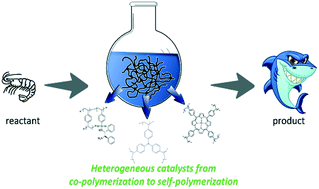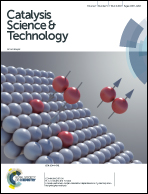Strategies for the design of porous polymers as efficient heterogeneous catalysts: from co-polymerization to self-polymerization
Abstract
Porous organic polymers (POPs) featured with high surface areas, large pore volumes, and extraordinary thermal and chemical stabilities, have attracted much attention. In the beginning, POPs were mainly constructed from metal catalysts involving C–C coupling reactions. Recently, efficient solvothermal polymerization of POPs from organic monomers with double bonds has been developed. Because of the universality and diversity of monomer polymerization, a series of targeted active sites can be precisely incorporated into porous polymers. By taking advantage of the versatility of the design and the conditions employed for the fabrication of polymers, both the composition and porosity of POPs could be effectively tailored. This survey will focus on recent developments of strategies for the design of porous polymers as efficient heterogeneous catalysts from co-polymerization of skeleton molecules with functional groups to self-polymerization of functional organic groups. These porous organic polymers with unique features offer a good opportunity to deploy highly efficient heterogeneous catalysts in the future.



 Please wait while we load your content...
Please wait while we load your content...